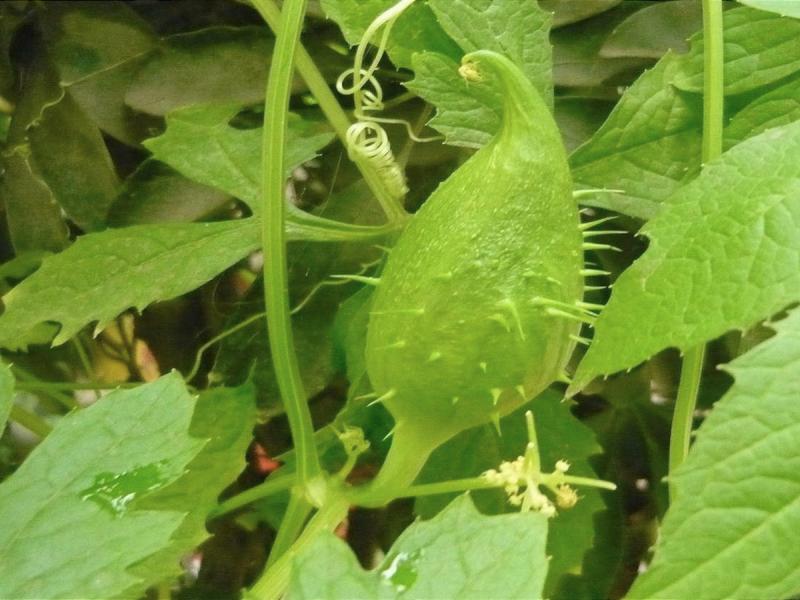To plant something new, first put on your thinking cap (from 1839) or its earlier version, “put on your considering cap” (dates back to the 1650s). To think, you need a brain, though many people seem able to speak without a brain. Big brains need big heads so the Inca nobility tightly tied the soft skulls of their newborns so their heads would be a long and cone-shaped. Inca medicine included cutting holes in the skulls of live patients, reducing fluid buildup and swelling from head wounds. Without antibiotics an amazing 80 to 90 percent survived.
The Inca not only mummified their dead, they would often display long-dead mummies from their tombs so the dead could celebrate with the living. One of the foods offered to mummies and living alike is Achocha or Caihua (pronounced kai-wa).
This cucumber relative is eaten cooked, often stuffed with meat or onions, sliced raw into salads, and even pickled. Its subtle flavor is compared to cucumbers with a hint of green peppers. You can even use the young shoots, tendrils and leaves as greens, either cooked or raw.
Because of their plump, stubby shape they are affectionately called Fat Babies. Unlike peppers or tomatoes, these mountain natives do well in cool temperatures and can be easily grown outdoors.
The very small, creamy white flowers attract beneficial pollinator insects such as hoverflies, which not only pollinate your garden, but eat aphids, thrips and leaf-hoppers.
Fat Babies (Cyclanthera brachystachya) are just about immune to many pests, including squash bugs, vine borers, cucumber worms and stand up to diseases like powdery mildew or fungus.
Fat Babies seeds do not look like seeds at all, but more like pieces of bark. To get a head start plant the odd-shaped seeds in peat pots indoors three to four weeks before your last frost.
You can plant them directly in the garden once the soil has warmed up and all danger of frost is passed. Sow the seeds a half inch deep, eight to 12 inches apart in rows three feet apart. Or plant in hills of four or five seeds each, thinning to one or two plants per hill.
Seeds are available from Johnnys Seeds (www.johnnyseeds.com).
Like all fast growing vegetables Fat Babies are heavy feeders, so add lots of composted manure or other organic fertilizers. Choose a spot in full sun with good drainage. A soil pH between 6.5–7.1 is ideal, but they seem to do well in less than ideal situations. You can either trellis the plants or let them sprawl on the ground.
They need a steady supply of water throughout the season. Try to water slowly in the morning, being careful not to get the leaves wet which can encourage diseases. A good organic mulch of leaves or straw will hold in soil moisture and keep weeds down. Achocha will produce Fat Babies fruit in just 60 to 70 days.
Keep Achocha vines harvested to encourage more fruiting, and they will keep producing right up until killed by frost.
Achocha will not cross with other cucumbers or squash so you can safely save your own seeds. The seeds ripen in the immature fruit, so just simply save seeds as you clean out the fruits for stuffing.
Plant Achocha, and soon you will have an unusual, delicious vegetable from the lost crops of the Incas. Use the fruit in salads, grilled or stuffed. Invite friends and family, including any mummies. This is truly one crop that is a no-brainer, and no skull drilling needed.





















































